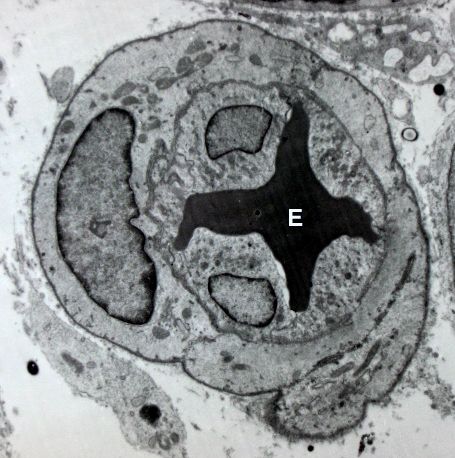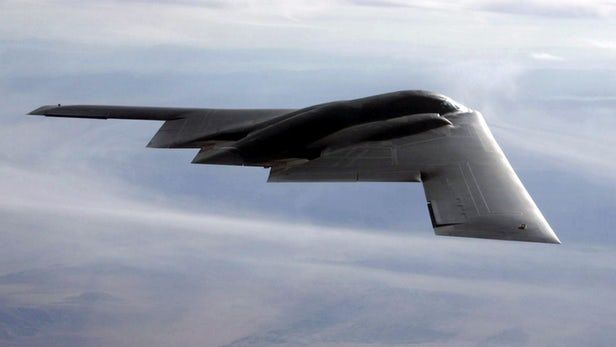Page 9768
Apr 26, 2018
Programmers! Close the StackOverflow tabs. This AI robot will write your source code for you
Posted by Genevieve Klien in categories: information science, robotics/AI
Think Java code-completion on steriods
Code boffins at Rice University in Texas have developed a system called Bayou to partially automate the writing of Java code with the help of deep-learning algorithms and training data sampled from GitHub.
Apr 26, 2018
AI-powered location: A step closer to the future? (VB Live)
Posted by Genevieve Klien in categories: mapping, robotics/AI, transportation
Cloud-based, AI-powered location technology is creating the highly accurate and always up-to-date maps that can revolutionize everything from autonomous cars to connected cities. To learn more about the application of data-enriched mapping to industries from retail to automotive, manufacturing, transportation and city planning, don’t miss this VB Live event!
Location is at the heart of everything: it’s the nexus between a device or an individual and the environment they interact with, and it can become the foundation of a smarter society. Location data is powered by cloud capabilities: global maps, traffic information and hundreds of millions of connected devices brought together to create the most up-to-date maps and power the “The Location of Things.”
Continue reading “AI-powered location: A step closer to the future? (VB Live)” »
Apr 26, 2018
The Military Just Created An AI That Learned How To Program Software
Posted by Genevieve Klien in categories: military, robotics/AI
Tired of writing your own boring code for new software? Finally, there’s an AI that can do it for you.
BAYOU is an deep learning tool that basically works like a search engine for coding: tell it what sort of program you want to create with a couple of keywords, and it will spit out java code that will do what you’re looking for, based on its best guess.
The tool was developed by a team of computer scientists from Rice University who received funding both from the military and Google. In a study published earlier this month on the preprint server arXiv, they describe how they built BAYOU and what sorts of problems it can help programmers solve.
Apr 26, 2018
The top 12 cryptocurrencies and what they are—and aren’t—good for
Posted by Genevieve Klien in category: cryptocurrencies
Every one is unique, but they have one thing in common: investors think they’re worth billions.
Apr 26, 2018
Geologists say N. Korea’s nuclear test site likely collapsed
Posted by Genevieve Klien in category: nuclear weapons
Apr 26, 2018
This Megamerger of 14 Galaxies Could Become The Most Massive Structure in Our Universe
Posted by Genevieve Klien in category: cosmology
Peering billions of light-years back to when the Universe was just 10 percent of its current age, astronomers have spotted a colossal pile-up: 14 young, starbursting galaxies merging into one of the most massive structures in the Universe.
Using some of the most powerful telescopes in operation today, an international research team discovered the extremely dense concentration of hot galaxies careening towards each other.
Eventually the megamerger will form a cluster of galaxies, gravitationally bound by dark matter and ultimately smooshing together into one ginormous galaxy.
Apr 26, 2018
NHS preparing to offer ‘game-changing’ cancer treatment
Posted by Genevieve Klien in categories: biotech/medical, health
Health service chief calls for affordable access to CAR-T, which modifies immune system to destroy cancer cells.
Sarah Boseley Health editor.
Thu 26 Apr 2018 13.29 EDT Last modified on Thu 26 Apr 2018 17.00 EDT.
Continue reading “NHS preparing to offer ‘game-changing’ cancer treatment” »
Apr 26, 2018
Novel antioxidant makes old blood vessels seem young again
Posted by Manuel Canovas Lechuga in categories: biotech/medical, life extension
Taking the supplement, dilation of subjects’ arteries improved by 42 percent, making their blood vessels, at least by that measure, look like those of someone 15 to 20 years younger. An improvement of that magnitude, if sustained, is associated with about a 13 percent reduction in heart disease, Rossman said. The study also showed that the improvement in dilation was due to a reduction in oxidative stress.
Older adults who take a novel antioxidant that specifically targets cellular powerhouses, or mitochondria, see age-related vascular changes reverse by the equivalent of 15 to 20 years within six weeks, according to new University of Colorado Boulder research.
The study, published this week in the American Heart Association journal Hypertension, adds to a growing body of evidence suggesting pharmaceutical-grade nutritional supplements, or nutraceuticals, could play an important role in preventing heart disease-the nation’s No. 1 killer. It also resurrects the notion that oral antioxidants, which have been broadly dismissed as ineffective in recent years, could reap measurable health benefits if properly targeted, the authors say.
Continue reading “Novel antioxidant makes old blood vessels seem young again” »
Apr 26, 2018
Quantum radar to render stealth technologies ineffective
Posted by Klaus Baldauf in categories: computing, military, quantum physics
Stealth technology may not be very stealthy in the future thanks to a US$2.7-million project by the Canadian Department of National Defence to develop a new quantum radar system. The project, led by Jonathan Baugh at the University of Waterloo’s Institute for Quantum Computing (IQC), uses the phenomenon of quantum entanglement to eliminate heavy background noise, thereby defeating stealth anti-radar technologies to detect incoming aircraft and missiles with much greater accuracy.
Ever since the development of modern camouflage during the First World War, the military forces of major powers have been in a continual arms race between more advanced sensors and more effective stealth technologies. Using composite materials, novel geometries that limit microwave reflections, and special radar-absorbing paints, modern stealth aircraft have been able to reduce their radar profiles to that of a small bird – if they can be seen at all.


















